The rapidly expanding world of marine oils hasn’t slowed its growth spurt in recent years, all because of the simple fact that demand has continued to skyrocket. One by one, individual consumers have awakened to the applicability of fish and other marine oil supplements to a wide range of critical health issues.
Continued demand has meant intense innovation and exciting research, as well as a search for better and more sustainable sources and harvesting methods. All this means one thing for would-be experts on the marine oil market, even those who had a handle on this category in the past: you may have a lot of catching up to do.
From one perspective, it shouldn’t have been hard to predict that further study of omega-3 fatty acids would continue to unveil new angles on their health benefits. It has long been understood that they’re a major component of what goes on in the body at a fundamental, structural level. Yet we can, at the same time, be allowed some amazement at what we’re hearing from researchers.
Indeed, Dallas Clouatre, Ph.D., R&D consultant for Jarrow Formulas, Los Angeles, CA, says that “Omega-3 fatty acids continue to surprise. For instance, most of us would never guess that four grams of purified fish oil per day (yielding approximately 3.4 grams omega-3 fatty acids) for eight weeks increases the rate of muscle protein synthesis in older individuals.” We’ll learn about this and many other inroads into the (until now) lesser-known benefits of omega-3s.
The driving force behind the success of this segment, of course, is this very recognition of omega-3s’ health benefits. But, some believe the clamor for products containing these substances threatens to run up against what nature actually has to offer. The problem isn’t the supplements market, which accounts for a miniscule percentage of total fish catch, but the overall consumption of marine life for food and other purposes. “At the omega-3 conferences in Belgium and Salt Lake City earlier this year, the omega-3 industry said within 10 years, and perhaps sooner, the demand for omega-3s is going to outstrip the supply,” says Eric Anderson, vice president of sales and marketing for Aker BioMarine Antarctic US, Inc., Seattle, WA.
There’s still more to cover, including the plethora of supplement and food applications that marine oils are winding up in. In the short-term it’s a marketing no brainer, but the future of the trend and the challenges it presents require analysis. In addition, there is the subject of allowable health claims for products in this category, as well as the establishment of the elusive Recommended Daily Intake (RDI) for omega-3s to discuss.
How Can They Help Thee? Let Us Count the Ways…
Prepare to up your appreciation quotient for omega-3s. That also goes for marine oils, since there are certainly other beneficial components within many sources of marine oil, aside from omega-3s. Most everyone connected with the supplements industry knows about the one U.S. Food and Drug Administration (FDA)-certified health claim for omega-3s (“Supportive but not conclusive research shows that consumption of EPA and DHA omega-3 fatty acids may reduce the risk of coronary heart disease”) and the mountain of research that backs it (1).
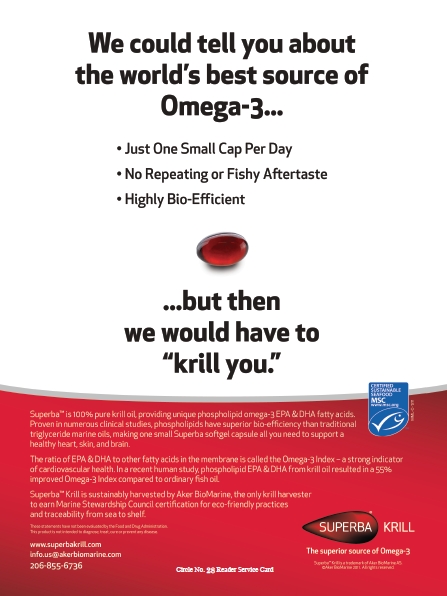 Even though this particular benefit is so well-established, it should be kept in mind that cardiovascular disease is the leading cause of death worldwide, and that for this reason additional research is important, according to Sigalit Zchut, Ph.D., director of R&D for the division of bio-active ingredients at Enzymotec, Ltd., Morristown, NJ. Further study will allow for continued substantiation of the link between marine oils and cardiovascular health.
Even though this particular benefit is so well-established, it should be kept in mind that cardiovascular disease is the leading cause of death worldwide, and that for this reason additional research is important, according to Sigalit Zchut, Ph.D., director of R&D for the division of bio-active ingredients at Enzymotec, Ltd., Morristown, NJ. Further study will allow for continued substantiation of the link between marine oils and cardiovascular health.
Zchut alludes to a relatively new tool for making this connection. “The omega-3 index is the ratio of omega-3 fatty acids out of the total fatty acids in the red blood cells plasma,” he says. Research shows a direct correlation between a high omega-3 index and a low risk of cardiovascular events, and there are established ranges for low, medium and high ratings on this index to allow individuals to get a sense of their own risk level.
Many are also aware of the brain health benefits that fatty acids, and omega-3s in particular, have been found to bestow. According to Trisha Sugarek, B.S., M.S., national educator and R&D specialist for Bluebonnet Nutrition Corp., Sugar Land, TX, this is because it’s mostly fat up there in our skulls. The brain is composed of 60% polyunsaturated fatty acids, mostly DHA, and “we require healthy, essential fatty acids from the diet to maintain its structure, as well as the lipid bi-layers of each and every cell of the body,” Sugarek says.
These attractions have been the main draw to fish and marine oil products for most consumers, but an informed retailer should be aware of their other healthful applications, some of which are only just being uncovered. To begin with, we have the condition of age-related muscle loss alluded to above, called Sarcopenia. It is, according to Clouatre, a common progression that comes along with the normal aging process, and unfortunately has limited options for improvement or reversal.
But the omega-3s in fish oil were found, at least in one study, to provide a boost to muscles against the grain of time. Sixteen healthy older individuals were given a regimen of corn oil or omega-3 fatty acids. While the first group saw no benefit, the omega-3 group saw improved muscle protein synthesis under certain conditions, as well as increased activity in anabolic signaling pathways, meaning the muscle formation process was more active (2). Along the same lines is evidence that fish oil supplementation can help reduce fat mass and increase lean mass in humans. “This research should help quell ‘fat supplement’ phobia among some consumers,” says Herb Joiner-Bey, N.D., scientific advisor to Barlean’s, Ferndale, WA.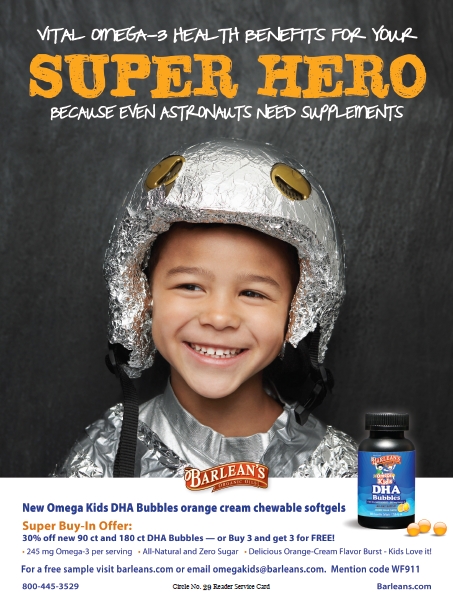
“Another area that is overlooked outside of research circles is eye health. The metabolism of omega-3 fatty acids helps to prevent retinopathy, a common eye condition linked to blindness in premature babies and diabetics,” says Clouatre. In an animal model, one of the metabolites of the omega-3 docosahexaenoic acid (DHA) was found to directly inhibit the progression of retinopathy, apart from its separate action as an antioxidant (3).
Like cardiovascular and brain health, immune health is one of the broad spectrum areas in which omega-3s likely have a role to play. The only difference may be public awareness, as attested to by Steve Holtby, president and CEO of Soft Gel Technologies, Inc., Los Angeles, CA. “While omega-3 oil may be best known for its ability to normalize lipids for cardiovascular health, the roles high levels of EPA (eicosapentaenoic acid) and DHA play in helping with immune system response continue to be documented,” he says.
For instance, some research tells us that omega-3 supplementation can alter the gene expression of peripheral blood mononuclear cells (PBMCs) (4). Many types of important immune cells fall under the heading of PBMCs, and omega-3s are thought to steer their genetic profiles away from inflammatory states. This may account for many of the protective effects omega-3s possess, as we’ll see in detail when we discuss inflammation.
There is also evidence linking omega-3 intake to the aging process, often in interesting ways. “The most exciting data is how omega-3 fatty acids seem to project the telomeres in our body,” says Baldur Hjaltason, North America sales manager for EPAX AS, Lysaker, Norway, and chairman of the Global Organization for EPA and DHA Omega-3s (GOED), Salt Lake City, UT.
Telomeres, he explains, are the protective structures that act as caps to every chromosome in the body, measuring about one ten-millionth of a meter long. They serve to protect DNA as it undergoes cellular division, and cell death and mutation is thought to occur when telomeres become too short. A study in the Journal of the American Medical Association published last year showed that subjects with high omega-3 levels in the blood appeared to age more slowly, as measured by the change in telomere length (5).
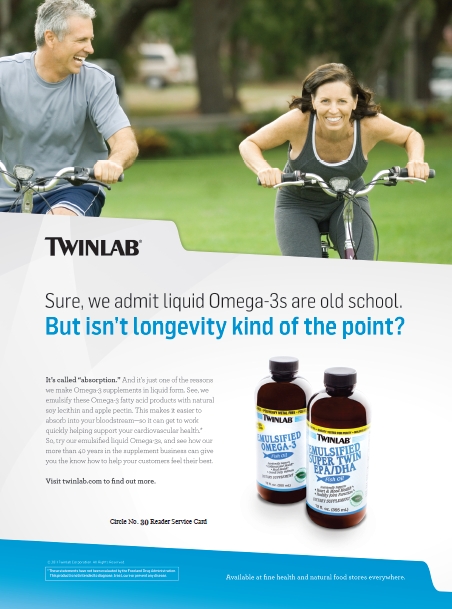 Many forms of chronic pain can benefit from omega-3 supplementation, according to a 2010 study cited by Jolie Root, nutritionist and educator for Carlson Laboratories, Inc., Arlington Heights, IL (6). Five patients experiencing pain as a result of burns, spinal stenosis, carpal tunnel syndrome and other causes took high doses of EPA and DHA (2,400–7,200 combined mg/day, depending on pain severity). While supplementing in this fashion, participant improvement was gauged on metrics like the McGill Pain Questionnaire, DN4 neuropathic pain scales, grip strength and tender point algometry. Significant drops in pain were reported in each case.
Many forms of chronic pain can benefit from omega-3 supplementation, according to a 2010 study cited by Jolie Root, nutritionist and educator for Carlson Laboratories, Inc., Arlington Heights, IL (6). Five patients experiencing pain as a result of burns, spinal stenosis, carpal tunnel syndrome and other causes took high doses of EPA and DHA (2,400–7,200 combined mg/day, depending on pain severity). While supplementing in this fashion, participant improvement was gauged on metrics like the McGill Pain Questionnaire, DN4 neuropathic pain scales, grip strength and tender point algometry. Significant drops in pain were reported in each case.
On a similar note, research into the effect of cod liver oil on rheumatoid arthritis (RA) has found promising results, according to Sugarek. A study examined symptoms of RA like morning stiffness and joint pain, and found that among 43 men and women of varying ages, 1 g of cod liver oil daily for three months decreased the severity of each of these symptoms significantly. Overall, the supplementation was efficacious for 70% of participants (7).
Cheryl Myers, head of education and scientific affairs at EuroPharma, Inc., Green Bay, WI, points out that omega-3s may be undervalued from a nutricosmetic perspective. The fact that they can do good things for skin, from the inside, out, may take time to grow on some consumers. “Many people still consider only topical products for healthy skin, but the fact is that omega-3s can do a lot of good here, too,” says Meyers, adding that she believes the concept is gaining traction in the marketplace.
Oils and inflammation. Many of the specific benefits described above are thought to stem from the propensity of omega-3s to stifle chronic inflammation. “The various cellular and tissue damages that can occur from chronic inflammatory states are certainly not healthful. This basic mechanism of action implies a wide-ranging and powerful effect of omega-3 fats to support wellness,” explains Neil E. Levin, CCN, DANLA, nutrition education manager for NOW Foods, Bloomingdale, IL.
Because of this wide-ranging effect, omega-3 supplementation has seen use in such conditions as psoriasis, lupus, inflammatory bowel disease and others, according to Marci Clow, M.S., R.D., senior director of product research for Rainbow Light Nutritional Systems, Santa Cruz, CA. The process of inflammation is highly complex, and omega-3s have been linked to many separate aspects of it at the cellular level. For instance, “Omega-3 fatty acids seem to suppress COX-2 expression and the inflammatory cytokines interleukin (IL)-1 alpha and tumor necrosis factor (TNF)-alpha,” says Clow.
More evidence is seen in reduced inflammatory activation of the endothelium, or the cell barrier lining the blood vessels, when enough omega-3s are present. As will be drawn out in our next discussions, the degree to which inflammation becomes a negative health factor is also largely determined by the balance of fatty acids present in the body.
Lipids in action. To understand the place that omega-3s occupy in the grand scheme of human wellness, it is extremely helpful to have a handle on how lipids influence overall health. As Sugarek notes, “lipid” is the common name for fatty acid in nutrition circles. They are, fundamentally, essential nutrients that serve as energy to cells, especially muscle cells when they’re at rest. Lipids in the form of cholesterol are used to transport many fat-soluble nutrients including vitamins, and carotenoids like beta-carotene. Finally, lipids function as key structural components in skin, brain and other important cells, as well as providing protective insulation in many areas.
The types of fatty acids that comprise the diet on a steady basis are incredibly influential in the way all of these tasks get completed, and the body has proven very adaptable in adjusting to different diets, according to Sugarek. “Even the fatty acid composition of the heart, which one might think of as a very stable tissue, can be rapidly modified,” she says. Omega-3s, to put things in perspective, are consistently identified as among the most healthful tool the body can use in this regard, though it must be stated that other omega fatty acids and other lipids are essential as well.
“What the public needs to understand is that widespread omega-3 polyunsaturated fatty acid (PUFA) deficiency affects the health of every cell in the entire body,” says Richard A. Passwater, Ph.D., who works in research and development at Solgar, Leonia, NJ. The growth of this understanding is what has lead to the 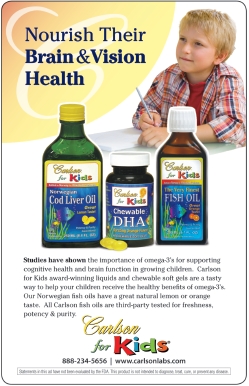 flourishing of the omega-3 and fish oil supplements market. “One recent discovery that is not as well known, however, is that the molecular form of fish oil makes a big difference for the body’s ability to absorb omega-3s,” points out Keri Marshall MS, ND, chief medical officer for Nordic Naturals, Watsonville, CA.
flourishing of the omega-3 and fish oil supplements market. “One recent discovery that is not as well known, however, is that the molecular form of fish oil makes a big difference for the body’s ability to absorb omega-3s,” points out Keri Marshall MS, ND, chief medical officer for Nordic Naturals, Watsonville, CA.
Indeed, the molecular form in which marine oil arrives is an important nutritional consideration. It is well-known that the majority of natural fish oils offer their benefits primarily as triglycerides. Meanwhile, “Krill, a small crustacean shellfish, is a unique source of omega-3 fats since krill also naturally bonds the fatty acids to phospholipids, which are essential for cell membranes and which enhance the bioavailability of the oil,” says Levin.
It’s not that other chemical components and molecular structures are absent in other marine sources. “Fish oil naturally contains a range of fats, including cholesterol, triglycerides and stearic acid. The ones that are considered less desirable, cholesterol and triglycerides, are sometimes removed from fish oils to further concentrate the omega-3 portion and allow higher strengths in fewer capsules,” says Levin.
Zchut says that phospholipids of EPA and DHA, as well of sterols of each, are present in other fish and marine species but are not typically extracted or are refined away. After citing krill oil as the best represented current marine source of phospholipids, Clouatre references research showing the influence phospholipids can have on both the absorption and distribution of long-chain fatty acids like omega-3s (8). These nutritional differences may prove important as the market for marine oils evolves, and it becomes clear which molecular forms serve which nutritional purposes the best.
Balancing act. The need to balance omega-6 fatty acid levels with those of omega-3s is known to many consumers by now. Still, it presents a bit of an intractable problem when we consider the actual state of consumer health. “The omega-6:omega-3 ratio in the U.S. is 20:1 and it is believed that this ratio really should be 4:1 or even 2:1,” says Sugarek.
Though this scary discrepancy means that most individuals will benefit from supplementing with omega-3s, one can get over zealous. Clouatre notes, for instance, that it’s possible to induce a relative deficiency in omega-6s, which can lead to inhibited immune system response. “Moreover, in terms of controlling the production of certain inflammatory eicosanoids, the pre-formed omega-6 fatty acid gamma-linolenic acid (GLA) is even more effective than are EPA and DHA,” he says.
Importantly, the disposition toward inflammation, and therefore toward developing many diseases, is partly determined by the omega-3:omega-6 ratio at the cellular level, according to Joiner-Bey. He notes that since all omega-3s are important, many consumers will supplement with a blend of each. When choosing a plan like this, he also suggests substituting the non-inflammatory omega-6 GLA for the omega-6 linoleic acid, present in many oils used in food.
As to the other omega-3 components of fish oil, “The amount of 7s and 9s you get in fish oil is simply too low to say they have any impact on health and wellness,” says Christopher Speed, MND, APD, director of nutritional sciences for Minami Nutrition, New York, NY, with products distributed by Garden of Life, West Palm Beach, FL. Still, Clouatre adds, “Omega-9 fatty acids do not drive physiological reactions in the ways that omega-3 and omega-6 fatty acids can and, therefore, tend to be balancing.”
Anderson returns our attention to the importance of the omega-3 index, and notes that there are at-home test kits available for individuals to check in on their own levels, usually through a prick of the finger and mailing off the sample to a lab. Even with this knowledge in hand, it remains for consumers to establish a proper balance by dieting correctly.
“The simplest and most biochemically sound way of turning down the body’s pro-inflammatory prostaglandins and cytokines is by restoring a balance between pro- and anti-inflammatory foods,” says Holtby. In this equation, pro-inflammatory foods are associated with omega-6 content, while the opposite is true of omega-3s. “For this reason, omega-6 fatty acids have recently received a bad reputation, especially when compared with omega-3 fatty acids, which are found in lower dietary levels. The negative reputation of omega-6 fatty acids is likely based on inadequate intakes of omega-3 fatty acids and not excessive omega-6 fatty acid intakes,” says Clow.
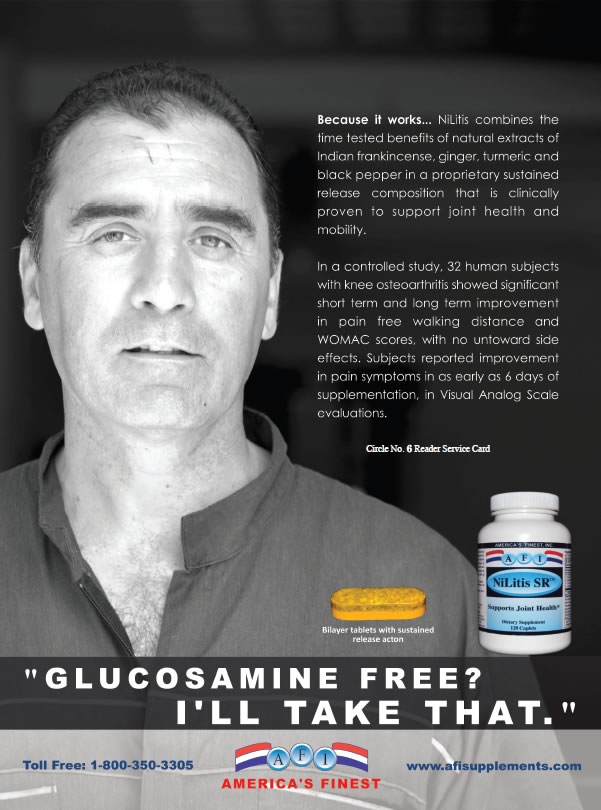 Since cutting back omega-6 intake may be unnecessary and too difficult, “the only other practical approach is to be sure that one gets an adequate amount of the omega-3s, especially the long-chain omega-3 PUFAs, which are primarily EPA, docosapentaenoic acid (DPA), and DHA,” says Passwater. Incidentally, “DPA has been clinically shown to increase EPA and DHA concentrations in the blood,” says Katherine Bond, director of business development for Cyvex Nutrition, Inc., Irvine, CA. This is because the lesser known DPA is an intermediary that can convert into EPA and DHA. DPA has proven more effective than EPA and DHA at inhibiting the aggregation of platelets, according to Bond, in addition to other unique properties.
Since cutting back omega-6 intake may be unnecessary and too difficult, “the only other practical approach is to be sure that one gets an adequate amount of the omega-3s, especially the long-chain omega-3 PUFAs, which are primarily EPA, docosapentaenoic acid (DPA), and DHA,” says Passwater. Incidentally, “DPA has been clinically shown to increase EPA and DHA concentrations in the blood,” says Katherine Bond, director of business development for Cyvex Nutrition, Inc., Irvine, CA. This is because the lesser known DPA is an intermediary that can convert into EPA and DHA. DPA has proven more effective than EPA and DHA at inhibiting the aggregation of platelets, according to Bond, in addition to other unique properties.
The whole concept of a golden ratio for omega fatty acids in the body remains largely indeterminate, according to Harry B. Rice, Ph.D., vice president of regulatory and scientific affairs for GOED. “This is a highly controversial issue and one that is not likely to be resolved in the foreseeable future,” he says. After emphasizing the point that most everything, food included, is fine in moderation, Rice says, “Perhaps a good way of looking at the issue is that omega-6s are over-consumed and omega-3s are under-consumed.”
Supplementing with high doses of omega-3s becomes the preferred route for most individuals because, Passwater says, “It is easier to restore balance by adding higher amounts of omega-3 PUFA than it is try to cut back on omega-6 PUFA.”
Omega-3s, broken down. Omega-3s in and of themselves are crucial to our health, to be sure, but there is growing recognition that what happens downstream of omega-3 ingestion is important to keeping us healthy. “An exciting new direction in omega-3 research is looking at the protective roles of the oxidative metabolites of EPA and DHA,” says Root.
Two of the most important metabolites are named, aptly, for the physiological roles they play. “The recently discovered tissue hormones called resolvins and protectins are necessary to shut down inflammation,” says Joiner-Bey. What are called the E-series of resolvins derive from EPA, while the D-series of both resolvins and protectins is derived from DHA, according to Joiner-Bey. He goes on to note that these compounds, identified only within the last dozen years, cannot be synthesized in the absence of omega-3s, and inflammation therefore cannot be properly controlled.
“The term ‘resolvins’ or ‘resolution-phase 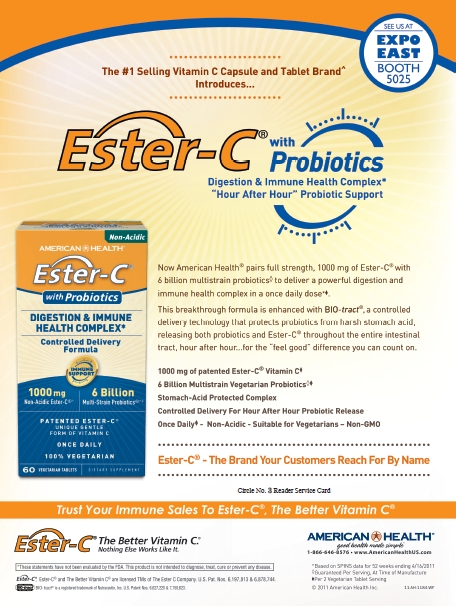 interaction products’ was coined because these compounds were first encountered in resolving inflammatory issues,” says Rice. Root breaks down further how these metabolites promote overall health. She explains that on the inflammation side of things, they fulfill a “clean up” role by clearing away the cellular remnants of the late phases of inflammation processes. Protectins (hence the name) have also been identified for their ability to protect the brain from traumatic events like stroke, and cognitive diseases including Alzheimer’s.
interaction products’ was coined because these compounds were first encountered in resolving inflammatory issues,” says Rice. Root breaks down further how these metabolites promote overall health. She explains that on the inflammation side of things, they fulfill a “clean up” role by clearing away the cellular remnants of the late phases of inflammation processes. Protectins (hence the name) have also been identified for their ability to protect the brain from traumatic events like stroke, and cognitive diseases including Alzheimer’s.
One protectin, which again derives from DHA, is called neuroprotectin D1, or NPD1. Along with DHA itself, NPD1 has been found to stem the tide of inflammation in the brain. Working backward from post-disease physiological evidence has led to this conclusion. “Neurological diseases that exhibit excessive markers for oxidative stress also display reduced NPD1 abundance,” Root says. Protectins and resolvins have also been found to possess immunoregulatory actions, at concentrations as low as the nano- and picomolar ranges, according to Ernesto Hernandez, Ph.D., director of process development for the OmegaPure brand from Cyvex Nutrition, Inc., and Omega Protein, Houston, TX.
Sourcing Matters
It seems the commercial popularity of something does not always go hand in hand with consumer understanding, and that holds true for marine oils. “Even with amazing growth in the omega-3 market, most consumers only know that omega-3s are good for them but aren’t yet differentiating between the sources, or even are necessarily sure why omega-3s are good,” says Anderson. Experts believe that the question of where their omega-3s are coming from only enters the minds of the savviest consumers. But that hasn’t stopped manufacturers from expanding consumer options through varied sourcing, and considering the topic of sustainability very seriously along the way.
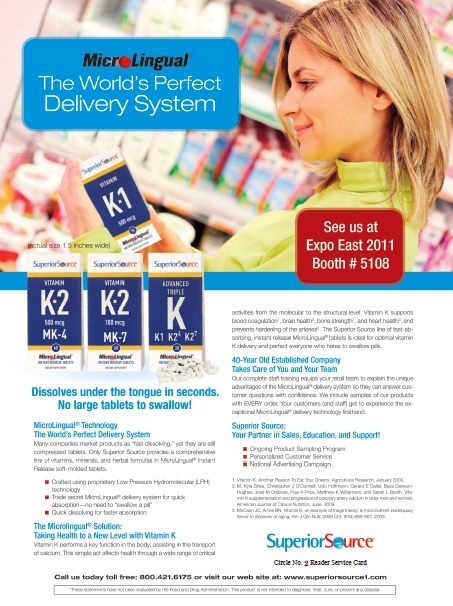 Zchut points to the close work many industry companies do with the Commission for the Conservation of Marine Living Resources (CCAMLR). By allowing scientists free rides on their krill harvesting vessels, Anderson says his company facilitates in-depth studies of the health of krill biomass. This allows for estimates of the size of krill populations around Antarctica, as well as the mapping of predators in the area, in order to reduce the impact of fisheries on species that depend on krill.
Zchut points to the close work many industry companies do with the Commission for the Conservation of Marine Living Resources (CCAMLR). By allowing scientists free rides on their krill harvesting vessels, Anderson says his company facilitates in-depth studies of the health of krill biomass. This allows for estimates of the size of krill populations around Antarctica, as well as the mapping of predators in the area, in order to reduce the impact of fisheries on species that depend on krill.
There are a number of consumers, and other interested parties including retailers, that have serious concerns over the ecological state of the oceans as well as for the purity and effectiveness of the finished product, according to Joiner-Bey. “They do not want the world’s oceans to be fished into species extinction,” he says.
These concerns may be unwarranted in some parts of the world, where regulators keep fish populations under close watch. “For example, the governments of Norway and Peru are said to tightly control by license and inspections the species and quantities of fish removed from their national ocean waters,” says Joiner-Bey. This current situation is no guarantee of stability in the future, he adds. A growing human population coupled with the growing popularity of fish oils could be a strain on reserves as time goes on.
Other efforts to protect fish populations include only fishing seasonally to protect natural spawning cycles, Myers explains. The use of fishing nets that allow small, immature fish to escape helps as well. “We want to protect the fishery for future generations and stay in business a hundred years from now,” Myers says.
This note of self-interest is echoed by Marshall, who states, “For both ethical and commercial reasons, it is self-defeating to think only about the next quarter, and disregard the health of the environment decades down the line.” Her company and others like it have a clear interest in maintaining environmental health, because if natural marine resources begin to fail, it could severely affect every aspect of business.
Many sources appear to remain robust at the current time. “There is no strain on the sourcing of mackerel, herring, anchovies and sardines, as all of the main omega-3 companies source from the same Peruvian fishery systems,” notes Speed, who attributes such sustainability to regulations already in place. Marshall says the Arctic cod, Pacific sardines, Peruvian anchovies and species of salmon her company utilizes are all at healthy levels. “With proper management, we anticipate that we’ll be able to continue to source these species of fish for the foreseeable future,” she says.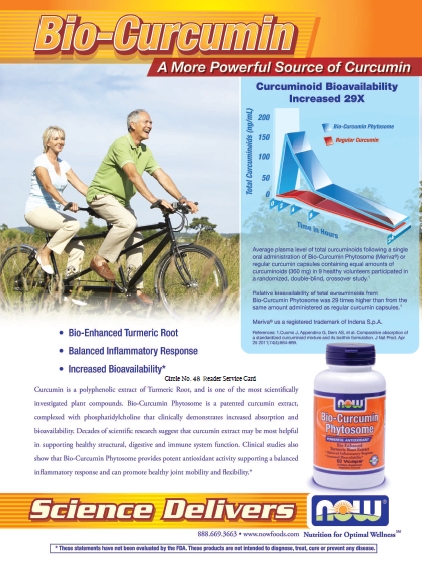
One unknown element in the sustainability equation is how far the emerging pharmaceutical trend in fish oils will go. Existing pharmaceuticals use very high concentrations of omega-3s, Hjaltason explains, and because of this, more raw fish oil is needed. If other drugs in development have similar success to the pharmaceutical Lovaza, already on the market, then Hjaltason can see demand pressing against supply in the future. He sees the fish feed and supplement industries switching in some cases to other sources, such as algae. Something else to look out for is a push to require a marine oil’s country of origin to appear on the labels of omega-3 products, according to Hjaltason.
It is important for those concerned to understand, Marshall reminds us, that the fish stocks used for supplement production account for less than 1% of the world’s catch. Any potential overfishing occurs because of the use of fish for human food and animal feed, including the feeding of fish to other fish on factory-style farms. Still, sustainability efforts remain a hallmark of good manufacturing practice in this category. “I think it should be a top consideration for any socially and environmentally responsible manufacturer,” Clow says.
Another concern is the purity of marine oil products, amid concerns of heavy metals and other contaminants. “The salmon we use are food-grade salmon that are ‘wild farmed’ in fjords along the coasts of Norway and Scotland,” says Myers. This means fish are sourced from an artificial “fish farm” in shallow water, miles from what Myers terms unsanitary conditions. This avoids sourcing from wild stocks that are likely being depleted, and that have the potential to become contaminated with heavy metals.
Consumers are looking for finished products for which the proper precautions have been taken to protect against pollutants in seawater. This could be a factor in any differentiation among marine oil sources that consumers are starting to make. “Having options allows people that may not want to use one source for whatever personal reason to find their omega-3s from an alternate source,” says Myers.
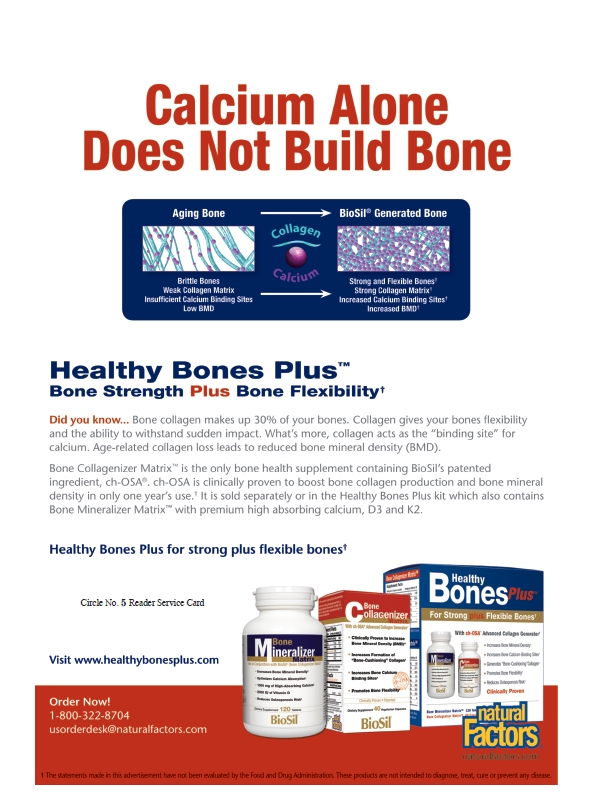 Some of these alternate sources are new enough to require introduction. “An exciting new source of marine omega-3s is calamari,” says Root. Industry insiders may be more aware of calamari as a viable source at this point, she believes, but continued availability and media exposure should allow it to grow as a factor in the market.
Some of these alternate sources are new enough to require introduction. “An exciting new source of marine omega-3s is calamari,” says Root. Industry insiders may be more aware of calamari as a viable source at this point, she believes, but continued availability and media exposure should allow it to grow as a factor in the market.
One important consideration for marine oil supplements, and perhaps even more so for the novel product applications we’ll soon learn of, is perishability. “As the intake of omega-3 essential fatty acids is increased by consuming fish oil, the need for even more antioxidant protection is actually increased,” says Holtby. He speaks of the potential for oxidation to cause marine oil to become rancid inside the body. Antioxidants in this context are necessary to avoid this result, especially since beyond rancidity, oxidation can lead to free radical formation as well.
Krill oil contains other elements aside from omega-3s that may help in this regard, including the antioxidant substances astaxanthin and canthaxanthin, as well as vitamin E. Yet, Holtby notes the published research into the benefits of krill oil is just not as extensive as fish oil, so more data will be needed to verify any unique qualities. Antioxidants, meanwhile, can be added to fish oil products as stabilizing components for this reason.
New Combinations, New Frontiers
It appears that the future of omega-3 products involves a whole host of nutritional components beyond omega-3s. “Comprehensive formulas that go beyond just delivering fish oil are on the leading edge of omega products today,” says Clow. These other additions have commonly included CoQ10, various vitamins and particularly substances with antioxidant qualities, for reasons of stability as described above. Because of the wide range of health applications of omega-3s to begin with, the synergistic possibilities of combination products are quite extensive.
Protection against oxidation and rancidity is in part a shelf-life issue. Products, especially fortified foods, may become susceptible to oxidation if they are not properly formulated and protected, making them unfit for human consumption, according to Joiner-Bey. When done right, novel applications for omega-3s are all the rage these days, in a very mainstream way. “Consumers love new ways to get omega-3s, and I believe they are willing to pay more for products that include them,” says Clow.
Omega-3s are popping up in other commercial oils where they would not naturally occur. “There appear to be more cooking oils that contain the omega-3s EPA and/or DHA. This appears to be a quick and easy way for consumers to bridge their omega-3 gap, as most Westernized populations are deficient in total omega-3 consumption,” says Speed.
One intriguing application is a Greek yogurt dip that delivers 50 mgs of EPA and DHA per serving, points out Julie Inman, national sales manager for OmegaPure. These types of products may have a special appeal to children, but are also a draw for all consumers because they’re easy to integrate into a diet routine. “Any product that delivers efficacious levels of EFAs in a convenient form has a much better chance of keeping customers coming back for more,” Myers believes.
Joiner-Bey cites the popularity of an omega-3 smoothie-like supplement as evidence of this trend. Because these emulsified oils taste good, consumers form a positive relationship with their daily dose of omega-3s. But these types of applications are not necessarily a walk in the park for manufacturers. “Taste and shelf life are definitely two major challenges. Even if you like fish, you may not enjoy a ‘fish/raspberry’ flavor to your functional food or supplement,” says Meyers.
Dosages may be limited in functional food applications, at least for the time being. This is because, thus far, non-concentrated fish oils have been used in most cases. “The main reason is that we will have to improve the stability and organoleptic qualities of the concentrates,” says Hjaltason. If concentrates can be made more palatable to the senses in these applications, they may make fortified products a more significant source of these nutrients. For now, Marshall says that from a proper dosing perspective, it’s doubtful whether the average individual’s omega-3 requirements can be filled exclusively through fortified food.
On the question of whether consumers are willing to pay more for everyday products with omega-3s added, Inman notes that some may be willing, but less than able economically. “If the product is priced too high many people who can really benefit from a healthier option will not choose it,” she says. People will tend to pay more for a product depending on how effective they feel it’s been for them, Myers a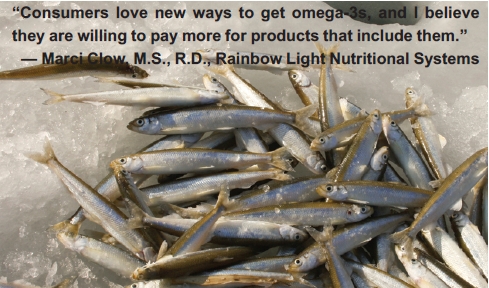 rgues, stating, “If something works, people come back to it. Otherwise, you’ll just have a one-time purchase made out of curiosity.”
rgues, stating, “If something works, people come back to it. Otherwise, you’ll just have a one-time purchase made out of curiosity.”
Many might not be aware of what goes into keeping marine oil products fresh, stable and effective, says Clouatre. In the context of adhering to good manufacturing practice (GMP) regulations, “Newer forms of supplementation, such as via enriched foods and beverages, pose special challenges,” says Clouatre. Joiner-Bey hopes that moving forward, products that have success in this market segment are made with quality in mind. Those products that jump on the bandwagon to make a few quick bucks are those that he hopes knowledgeable consumers and retailers will steer clear of. “As with any popular fad, some consumers will fall for the hype that omega-3s have been added to a product, regardless of how that was done, to make the product more attractive and in vogue,” he says.
Recommended intakes and more. In the regulatory sphere, advocates of omega-3s are not done working toward consumer awareness, and regulators themselves are starting to take notice. In the past year, according to Marshall, Senators Kirsten Gillibrand (D-NY) and Tom Coburn (R-OK) sent a formal petition to the FDA, urging an update to the guidelines for consumption of fish by pregnant and lactating women. They cited “an overly risk-averse, precautionary principle that has led to unhealthy reductions in seafood consumption among pregnant women.”
 This is a counter-reaction to concerns over the safety of fish, and this trend back toward healthy consumption levels applies just as well to the supplements market. “This kind of news is always encouraging, as it is movement in a positive direction for both the omega-3 supplement industry, and for public health,” Marshall says.
This is a counter-reaction to concerns over the safety of fish, and this trend back toward healthy consumption levels applies just as well to the supplements market. “This kind of news is always encouraging, as it is movement in a positive direction for both the omega-3 supplement industry, and for public health,” Marshall says.
Speed notes that scientists and advocates with GOED and other research groups are now working, often with some resistance from FDA and the Federal Trade Commission, for greater regulatory recognition of the negative effects of omega-3 deficiency. Heightened consumer awareness is the goal of many of these efforts, especially concerning the links between a lack of omega-3s and developmental concerns in children, depression and mood disorder in adults, degenerative diseases and weight issues.
Another issue is the push for a Recommended Daily Intake level for omega-3s, which would allow consumers, and those advising them medically, to consistently determine whether more omega-3s are necessary. “With all the research done in the past three decades, there is enough data to support the idea that omega-3 should have an established RDI,” says Zchut, adding that people should be checking their own omega-3 index in the meantime, making sure they are present at levels associated with reduced risk for cardiovascular disease.
Zchut described for WholeFoods the fate of a recent omega-3 health claims review by the European Food Safety Authority (EFSA). Regulators were asked to review a petition from multiple companies about health claims for EPA and DHA, in categories including (deep breath) maintenance of normal cardiac function, normal blood glucose concentrations, normal blood pressure, normal blood HDL-cholesterol concentrations, normal (fasting) blood concentrations of triglycerides, normal blood LDL-cholesterol concentrations, protection of the skin from photo-oxidative (UV-induced) damage and contribution to the normal function of the immune system. “However, sadly, the only claim that received a positive review from EFSA was a claim related to omega-3 fatty acids and normal cardiac function,” Zchut says.
This is the European parallel to the FDA-allowed claim about omega-3s and coronary heart disease. On that front, GOED’s Rice reminds us that this qualified health claim came about in 2004, when the available evidence was deemed to fall short of FDA’s “significant scientific agreement” standard for an unqualified claim. Rice explains that if this was perhaps the case back then, it certainly no longer represents the current state of the science.
While acknowledging that quantity is not quality, he notes that the number of peer-reviewed publications related to the benefits of EPA and DHA, as monitored by GOED, has more than doubled since then, including many directly involving cardiovascular benefit. “In the near future, GOED will make a push to ‘upgrade’ the qualified health claim to reflect the current science. We see at least two options and are in the process of determining the best strategy,” Rice says. WF
References
1. “Summary of Qualified Health Claims Subject to Enforcement Discretion,” U.S. Food and Drug Administration, June 6, 2011, http://www.fda.gov/Food/LabelingNutrition/LabelClaims/QualifiedHealthClaims/ucm073992.htm, accessed July 28, 2011.
2. G.I. Smith, et al., “Dietary omega-3 fatty acid supplementation increases the rate of muscle protein synthesis in older adults: a randomized controlled trial,” Am J Clin Nutr. 93(2), 402-412 (2011).
3. P. Sapieha, et al., “5-Lipoxygenase metabolite 4-HDHA is a mediator of the antiangiogenic effect of Omega-3 polyunsaturated fatty acids,” Sci Transl Med. 9;3(69), 69ra12 (2011).
4. M. Bouwens, et al., “Fish-oil supplementation induces antiinflammatory gene expression profiles in human blood mononuclear cells,” Am J Clin Nutr. 90(2), 415-424 (2009).
5. R. Far-Farzeneh, et al., “Association of marine omega-3 fatty acid levels with telomeric aging in patients with coronary heart disease,” JAMA. 303(3), 250-7 (2010).
6. G.D. Ko, et al., “Omega-3 Fatty Acids for Neuropathic Pain: Case Series,” Clin J Pain. 26 (2), 168-172 (2010).
7. J. Gruenwald, et al., “Effect of cod liver oil on symptoms of rheumatoid arthritis,” Adv Ther. 19(2), 101-7 (2002).
8. L. Amate, et al., “Dietary long-chain PUFA in the form of TAG or phospholipids influence lymph lipoprotein size and composition in piglets,” Lipids. 37(10), 975-80 (2002).
Published in WholeFoods Magazine, September 2011










